Glacier National Park in Montana has a long history dating back to 1910 when it was established. Covering over a million acres of beautiful wilderness, the park has different landscapes and wildlife. It’s a fascinating place where stories and interesting facts about exploration and efforts to protect nature come together, showcasing the uniqueness of Glacier National Park.
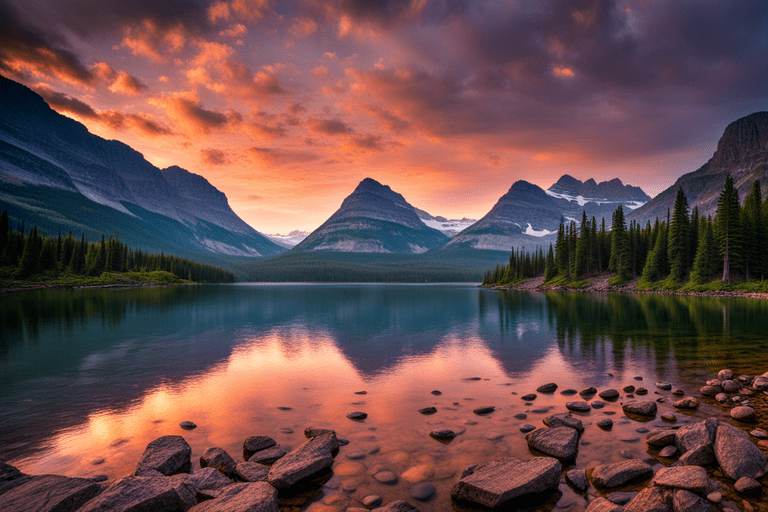
Initially inhabited by Native American tribes, the area became a protected haven in the early 20th century. President William Howard Taft signed the legislation, setting the stage for Glacier National Park’s emergence as a national treasure. Over the decades, this vast expanse has witnessed the ebb and flow of both human and glacial activity, leaving an indelible mark on its storied terrain.
Within its borders lie over 130 lakes, countless peaks, and an array of wildlife, creating an ecological mosaic that beckons adventurers and nature enthusiasts alike. Steeped in the legacy of indigenous cultures and conservation efforts, Glacier National Park stands as a testament to the enduring beauty of the American wilderness, inviting all to uncover its 28 captivating facts.
Also read this: 26 Interesting Fun Facts About Hawaii Volcanoes National Park
Quick Fun Facts About Glacier National Park
- Established in 1910: Glacier National Park spans 1 million acres of pristine wilderness.
- Trail Paradise: Over 700 miles of trails cater to hikers of all levels.
- Iconic Road: Marvel at the engineering wonder of Going-to-the-Sun Road.
- Climate Impact: Witness the reduction from 150 glaciers in the 19th century to 26 today, highlighting climate change.
- Wildlife Oasis: Encounter grizzly bears, mountain goats, and elk.
- Lakeside Beauty: Enjoy alpine lakes like Lake McDonald and Saint Mary Lake.
- International Connection: Bordering Canada’s Waterton Lakes, it’s an International Peace Park.
- Geological Marvels: Explore unique formations, including the Garden Wall.
- Nature Watching: Opportunities for wildlife viewing and birdwatching abound.
- UNESCO Recognition: A UNESCO World Heritage Site and International Peace Park.
- Historic Charm: Step into history with lodges like the timeless Many Glacier Hotel.
- Hiker’s Delight: Trails for all levels amidst breathtaking scenery.
- Ancient Forests: Discover ancient red cedar and hemlock trees in lush, forested areas.
- Ecosystem Diversity: Alpine and subalpine ecosystems showcase rich biodiversity.
- Seasonal Contrasts: Short summers and lingering snow offer varied experiences.
- Music in Nature: The annual Crown of the Continent Guitar Festival blends nature and music.
- Water Activities: Engage in boating, fishing, and water-based activities in pristine lakes.
- Climate Change Awareness: Rapid glacier retreat emphasizes the need for conservation.
- Starry Nights: Experience a pristine night sky, perfect for stargazing and astrophotography.
Also read this: 50 unbelievable Fun Facts about OHIO
Glacial Origins and Geographic Marvels
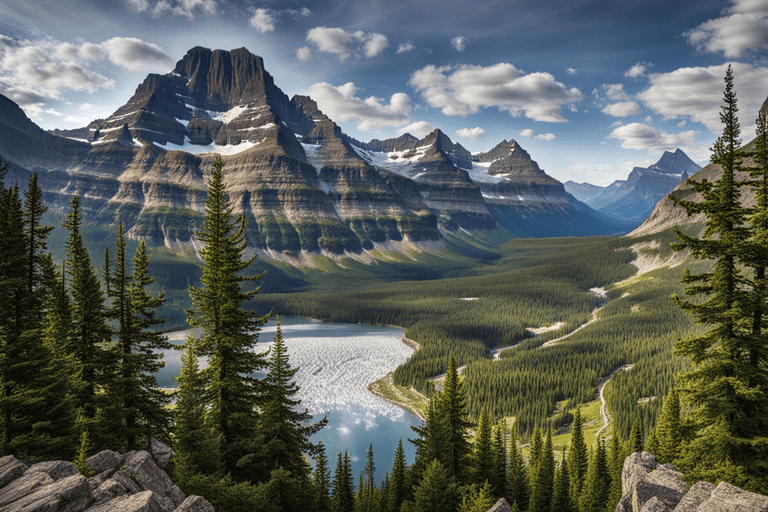
Icy Beginnings
Established in 1910, Glacier National Park spans the U.S.-Canada border, encompassing over a million acres of untamed wilderness. The park’s genesis traces back to the sculpting forces of glaciers that shaped its rugged landscapes.
Retreating Giants
Contrary to its name, the park faces the stark reality of receding glaciers. In the mid-19th century, approximately 150 glaciers graced the terrain, but today, only 26 endure, their decline attributed to the far-reaching effects of climate change.
Also Read this: 26 Interesting Fun Facts About Hawaii Volcanoes National Park
International Peaks
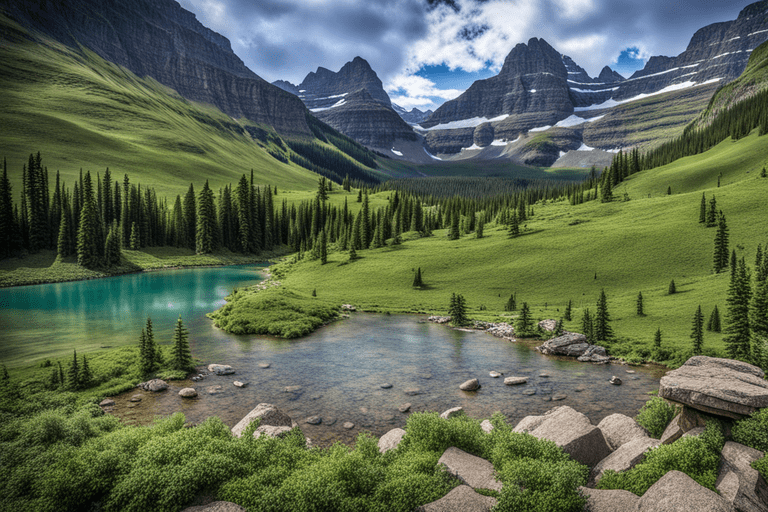
Boasting more than 700 miles of trails and over 700 lakes, Glacier National Park beckons hikers and nature enthusiasts to explore its diverse ecosystems. From alpine meadows to dense forests, each trail unfolds a unique chapter of the park’s ecological story.
Wildlife Wonderland
Bear Country
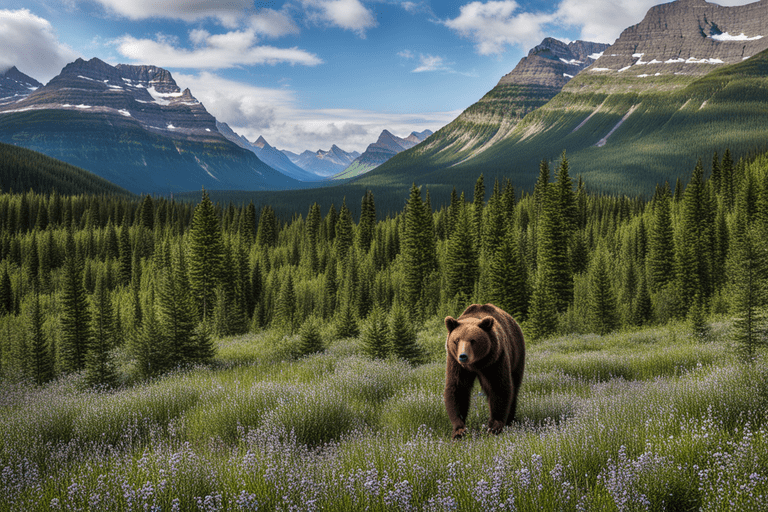
The park’s rich biodiversity includes grizzly bears, black bears, mountain goats, and bighorn sheep. Conservation efforts aim to ensure the continued thriving of these species in their natural habitats.
Winged Wonders
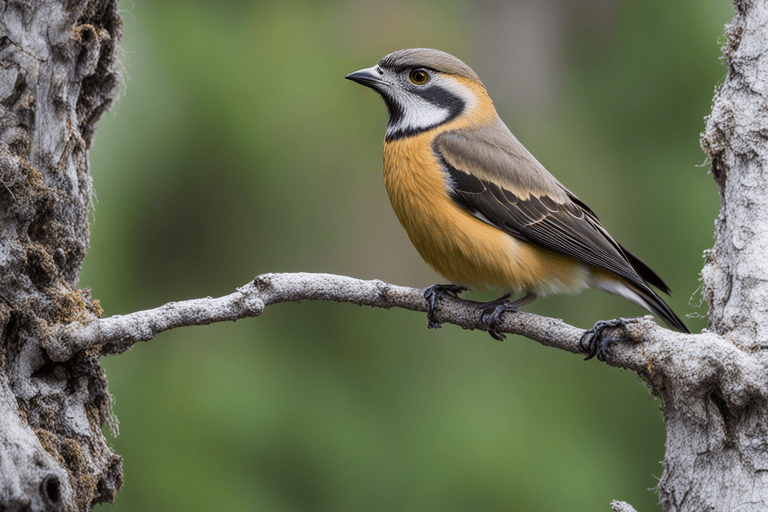
Birdwatchers are in for a treat, with over 260 bird species calling the park home. The majestic bald eagle soars through the skies, while the elusive harlequin duck graces the park’s pristine waters.
Fish Tales
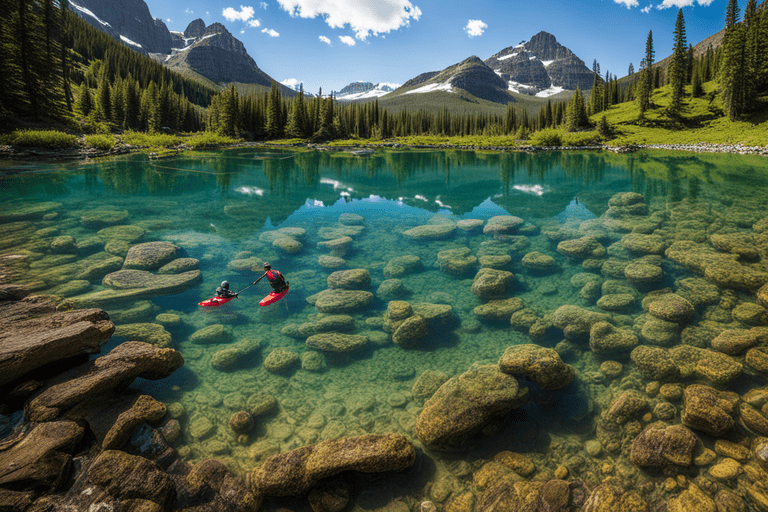
Glacier National Park’s crystal-clear lakes and streams teem with fish life. Native species like cutthroat trout and bull trout thrive, contributing to the delicate balance of aquatic ecosystems.
Going-to-the-Sun Road – An Engineering Marvel

Highway in the Sky
The renowned Going-to-the-Sun Road, an engineering marvel completed in 1932, spans 50 miles, offering a panoramic journey through the heart of the park. This iconic road takes travelers on a winding adventure through some of Glacier’s most breathtaking landscapes.
Elevation Elation
Reaching a lofty elevation of 6,646 feet at Logan Pass, this engineering feat treats visitors to awe-inspiring vistas of snow-capped peaks and glacial valleys. The pass serves as a gateway to numerous hiking trails, revealing the park’s high-altitude wonders.
Seasonal Spectacle
Open typically from late June to mid-October, the Going-to-the-Sun Road showcases the park’s ever-changing beauty, from the blooming wildflowers of summer to the pristine snowscapes of early fall.
Historical Significance and Indigenous Presence
Native Roots
Prior to gaining national park status, the area was home to indigenous peoples, notably the Blackfeet Nation. In acknowledgment of this heritage, the park collaborates with native communities to preserve cultural legacies and promote understanding.
Historic Lodges
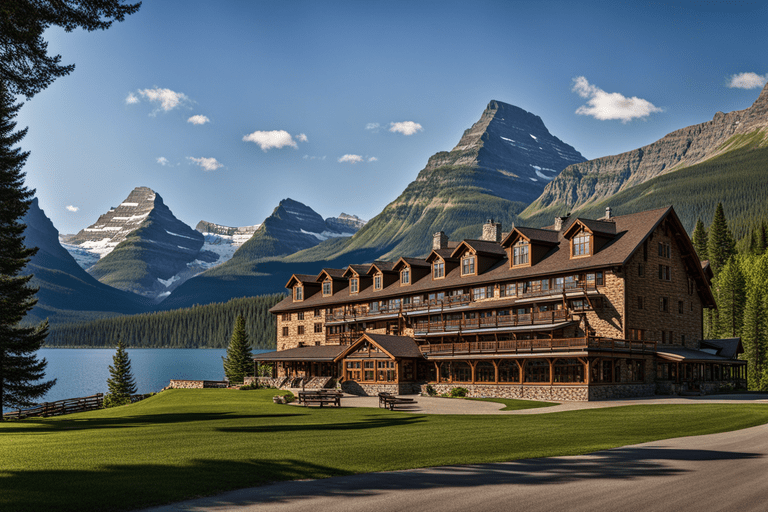
Glacier National Park boasts historic lodges like the Many Glacier Hotel and Lake McDonald Lodge. These architectural gems offer a glimpse into the park’s past, providing a unique blend of comfort and nostalgia for visitors.
Waterton-Glacier International Peace Park
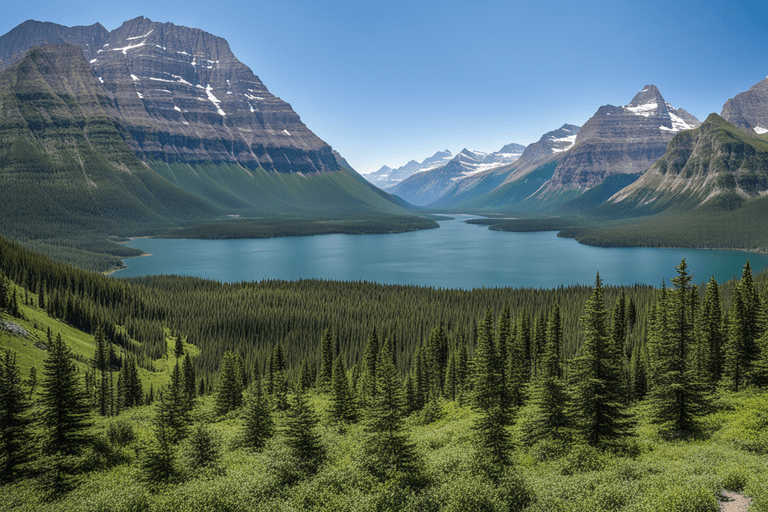
In a groundbreaking initiative, Glacier National Park and Canada’s Waterton Lakes National Park joined forces to become the world’s first International Peace Park. This symbolic partnership underscores the harmonious relationship between the two nations and their commitment to environmental stewardship.
Glacial Waters and Turquoise Lakes
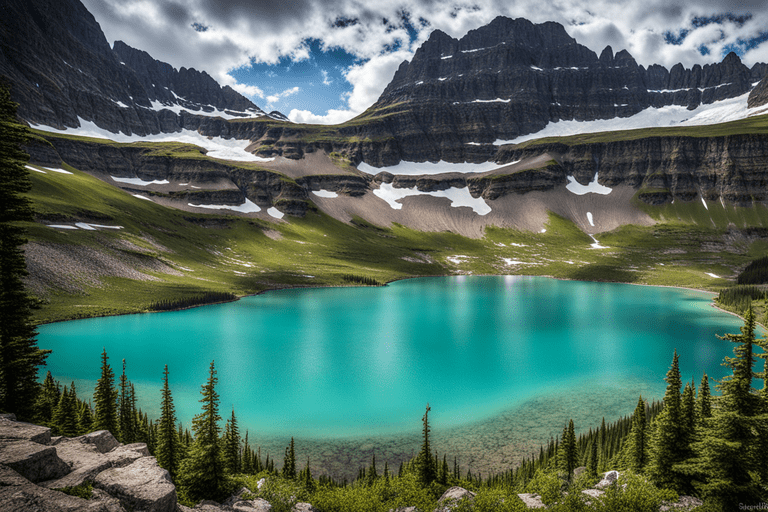
Turquoise Temptations
Glacier National Park’s lakes, including the stunning Lake McDonald and St. Mary Lake, mesmerize with their turquoise hues. This captivating color results from the reflection of sunlight on glacial silt suspended in the water.
Avalanche Lake
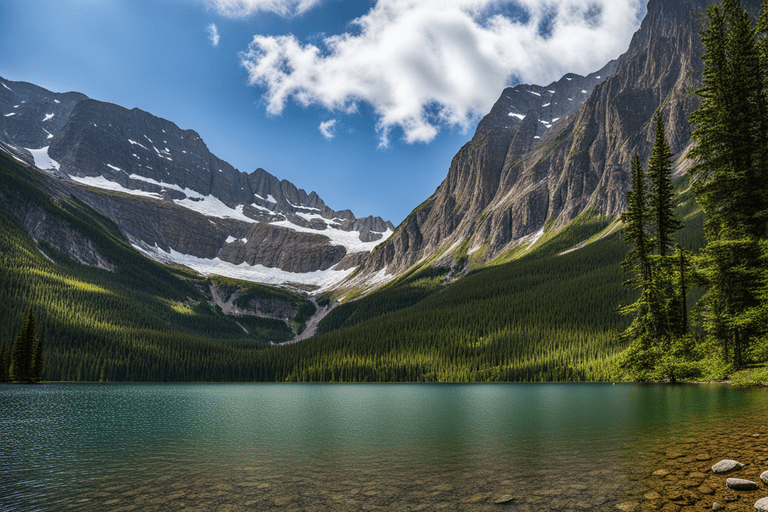
Nestled in a glacial cirque, Avalanche Lake enchants visitors with its serene beauty. Accessible via a scenic trail, this hidden gem reveals a secluded paradise surrounded by towering peaks and cascading waterfalls.
Grinnell Glacier
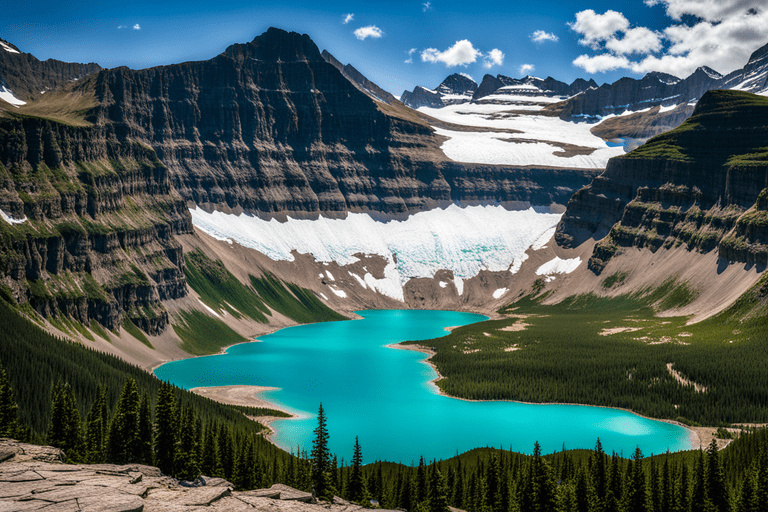
One of the park’s iconic glaciers, Grinnell Glacier, serves as a testament to the raw power of nature. This living entity embodies the delicate balance of glacial ecosystems, urging us to ponder the interconnectedness of all living things.
Wildflowers and Alpine Meadows
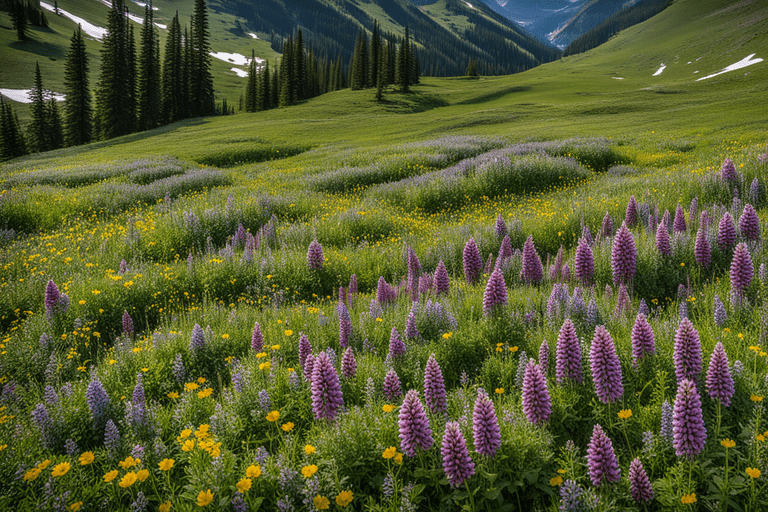
Floral Symphony
In the summer, Glacier National Park transforms into a vibrant canvas as wildflowers burst into bloom, carpeting alpine meadows in a kaleidoscope of colors. This annual spectacle is a testament to the resilience and adaptability of high-altitude flora.
Logan Pass Wildflower Festival
July brings the Logan Pass Wildflower Festival, a celebration of the park’s diverse flora. Visitors can immerse themselves in the riot of colors while learning about the unique adaptations that allow these alpine plants to thrive in challenging environments.
Hidden Lake Trail
For those seeking a panoramic vista, the Hidden Lake Trail delivers. Winding through alpine meadows adorned with wildflowers and inhabited by mountain goats, this trail culminates in a breathtaking overlook of Hidden Lake and its surrounding splendor.
Outdoor Adventures and Recreation
Backcountry Bliss
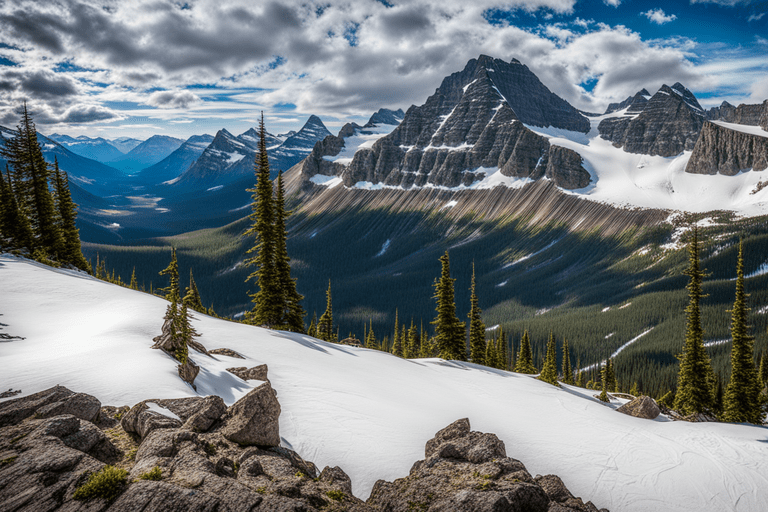
Glacier National Park beckons adventurous souls with over 700 miles of trails, leading intrepid hikers to remote lakes, glaciers, and awe-inspiring vistas. The backcountry offers a sanctuary for those seeking a deeper connection with nature, away from the beaten path.
Red Bus Tours
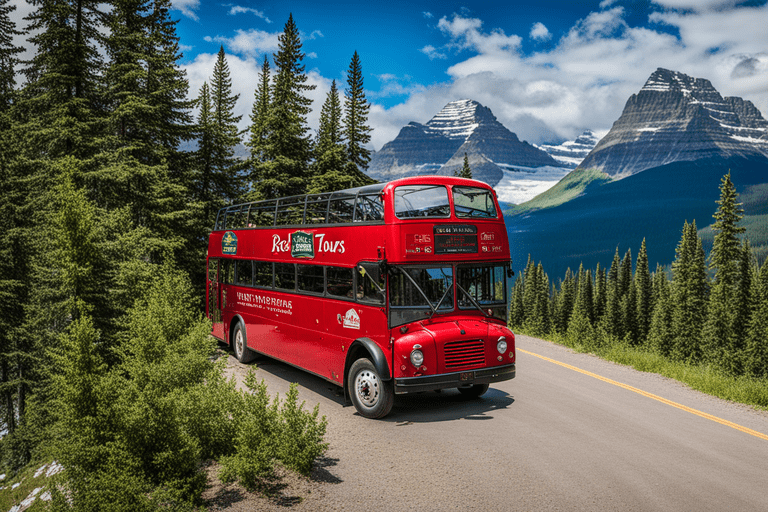
Steeped in nostalgia, the park’s iconic red buses, dating back to the 1930s, provide a stylish and informative mode of exploration. Expert guides share tales of the park’s history, geology, and wildlife, ensuring an enriching experience for all passengers.
Waterton-Glacier International Peace Park Traverse
For the bold and adventurous, the 110-mile traverse connecting Glacier National Park with Canada’s Waterton Lakes National Park promises a challenging backcountry experience. This epic journey unfolds against a backdrop of diverse ecosystems and captivating landscapes.
Night Sky Splendor and Stargazing

Dark Sky Reserve
Recognized as an International Dark Sky Park, Glacier National Park stands as a beacon for stargazers. The absence of light pollution allows for an unparalleled view of the night sky, offering a canvas for celestial wonders.
Perseid Meteor Shower
August brings a celestial spectacle to the park – the Perseid meteor shower. Visitors can witness shooting stars streaking across the night sky, creating a breathtaking display that adds an extra layer of magic to the park’s enchanting atmosphere.
Nightly Wonders
The park’s high elevation and pristine air quality create optimal conditions for observing constellations, planets, and the Milky Way. Astronomy enthusiasts and casual stargazers alike can revel in the nightly wonders overhead.
Preservation Efforts and Climate Challenges
Glacier National Park Conservancy

A vital force in the park’s preservation, the Glacier National Park Conservancy plays a crucial role in safeguarding its natural and cultural resources. Through funding, education, and advocacy, the Conservancy ensures that the park remains a thriving ecosystem.
Climate Change Impact
Glacier National Park serves as a poignant reminder of the far-reaching impacts of climate change. The shrinking glaciers and altered ecosystems underscore the urgent need for global environmental conservation efforts to mitigate the effects of a changing climate.
Citizen Science Programs
Engaging visitors in scientific endeavors, Glacier National Park offers citizen science programs. By participating in these initiatives, park visitors contribute valuable data, aiding researchers in understanding the park’s ecology, wildlife behavior, and climate dynamics.
A Call to Conservation
Every Footstep Matters
As we traverse the wonders of Glacier National Park, let each footprint be a reminder of our responsibility to preserve and protect this natural treasure. Conservation efforts, both big and small, are crucial to ensuring that future generations can marvel at the same breathtaking landscapes that have captivated visitors for over a century.
FAQs
A: Glacier National Park was established in 1910, and it spans over 1 million acres of pristine wilderness.
A: Approximately 26 glaciers remain in the park today, down from around 150 in the late 19th century.
A: Going-to-the-Sun Road is the renowned scenic drive, spanning 50 miles through the park’s stunning landscapes.
A: Bears, mountain goats, elk, moose, wolves, and bighorn sheep are among the diverse wildlife that roam the park.
A: Yes, the Blackfeet Nation considers this area sacred and has a historical connection to the land.